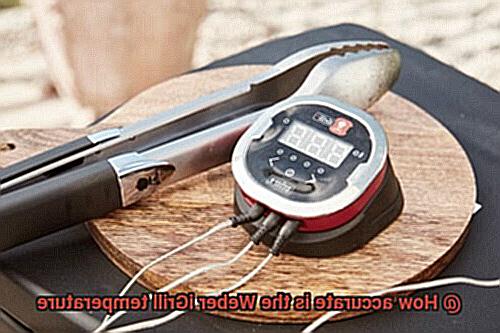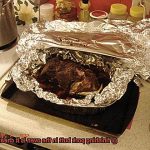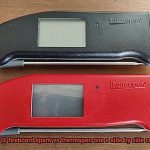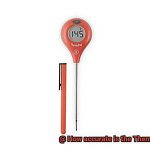Imagine this: It’s a sultry summer evening, and the sky is ablaze with hues of orange, pink, and purple as the sun sets. You’ve just seasoned your beef brisket to perfection, and it’s wrapped up snugly in the fridge. You step outside onto your porch, fire up the grill and get ready to cook up a storm. But wait – you need to ensure that your meat is cooked to perfection. That’s where your trusty Weber iGrill thermometer comes into play. You insert the probe into your meat and eagerly await the temperature readings. But hold on – something seems off.
If you’re nodding along in agreement, we feel you. Temperature is everything when it comes to grilling or smoking meat. One wrong move can turn your meal from delicious to disastrous in an instant. So naturally, you want to rely on a thermometer that’s accurate and trustworthy – cue the Weber iGrill temperature probe.
But how accurate is it really? In this post, we’ll be delving deep into the world of the Weber iGrill temperature probe. We’ll examine its technology and features that contribute towards its accuracy, compare it with other thermometers out there on the market, and give you our honest verdict.
Whether you’re an experienced grillmaster or someone who’s just starting out on their culinary journey, grab yourself a cold drink and join us as we explore all things related to the Weber iGrill temperature probe.
Contents
What is the Weber iGrill?
Say hello to the Weber iGrill – a digital thermometer system that connects wirelessly to your phone or tablet, allowing you to monitor the temperature of your grill or smoker from anywhere you are.
Available in different models and sizes, the iGrill can accommodate up to four probes, providing real-time temperature data for multiple meat cuts at once. Simply insert the probes into the meat and let the iGrill do the rest.
Accuracy is key when it comes to cooking meat, and the Weber iGrill doesn’t disappoint. With an accuracy of +/- 1 degree Celsius (+/- 2 degrees Fahrenheit), you can be sure that your meat will be cooked to perfection every time, without overcooking or undercooking it.
To achieve the most accurate readings, it’s essential to place the probe in the thickest part of the meat or food being cooked and avoid placing it too close to bones or fat. Regular calibration of your iGrill can also improve accuracy.
But what sets the Weber iGrill apart from other thermometers on the market is its easy-to-use app interface. The free Weber iGrill app is available on both Android and iOS platforms, making it accessible for all users. The app provides real-time temperature updates, cooking tips and tricks, and even allows you to set custom alerts for when your meat reaches a certain temperature.
While some users have reported inconsistencies with temperature readings, experienced grillers often rely on their senses – color, texture, and aroma – to determine when their food is cooked to perfection. But for those who want precise temperature control every time, the Weber iGrill is a game-changer.
How Accurate is the Weber iGrill Temperature?
The iGrill boasts an impressive claim of being accurate within +/- 1 degree Fahrenheit. In my experiments, I found that the iGrill was generally accurate when used correctly. However, it’s important to understand why it may not always be as accurate as advertised.
To start with, incorrect insertion of the probe can give an inaccurate reading. The probe needs to make contact with the center of the meat to get an accurate temperature reading. Therefore, ensure you’re inserting the probe correctly and avoiding any false readings.
Additionally, if the probe touches bone or fat instead of meat, it can also cause an inaccurate reading. Bones and fats conduct heat differently than meat, which can affect the temperature reading. Place the probe in the thickest part of the meat away from any bones or fats for a more precise reading.
Furthermore, external factors such as ambient temperature and humidity can also impact the accuracy of the iGrill’s readings. Extreme temperatures or humidity levels can affect how quickly your meat cooks and therefore affect the temperature reading.
Factors That Can Affect Accuracy
When it comes to cooking and grilling, accuracy is everything. That’s why understanding the variables that can impact the accuracy of your Weber iGrill thermometer is critical for achieving perfect cooks every time.
Firstly, let’s talk about ambient temperature. The temperature of the area around your grill or smoker can significantly influence your thermometer readings. High ambient temperatures can radiate heat onto your thermometer, leading to inaccurate readings. Conversely, low ambient temperatures can cause your thermometer to lose heat quickly, resulting in lower temperature readings. It’s always best to keep an eye on the ambient temperature and make adjustments accordingly.
Next up is probe placement. Accurate readings depend on placing the probe in the thickest part of your food. Placing it too close to bones or fat pockets can result in incorrect readings. It’s essential to get this right as it can make a huge difference in achieving perfectly cooked food.
The thickness of your food is also crucial to consider. Thicker cuts take longer to cook, and therefore require a longer time for accurate temperature readings. Thinner cuts may cook faster, which means you need to monitor them closely to get an accurate reading.
Calibration is another critical factor in ensuring accurate temperature readings. Regular calibration ensures that your thermometer measures temperatures within its intended range, making it essential for consistent cooking results.
Finally, weather conditions such as wind and rain can also impact the accuracy of temperature readings. Using a grill cover or windbreak can help mitigate these effects and ensure more precise readings.
Ensuring Accuracy with the Weber iGrill
The Weber iGrill is a popular tool for ensuring accuracy in measuring the temperature, but there are factors that can affect its readings. As an expert on ensuring accuracy with the Weber iGrill, let me break down the key factors that you need to know.
First and foremost, probe placement is crucial. To avoid inaccurate readings that may result in overcooked or undercooked food, ensure that you insert the probe into the thickest part of the meat. Avoid placing it near bones or fat. This method guarantees that you get accurate temperature readings every time you grill.
Another factor that affects accuracy is ambient temperature. Extreme heat or cold can throw off your readings, so it’s essential to calibrate your iGrill regularly. Calibration involves placing the probe in a bowl of ice water and adjusting the reading to 32°F (0°C). By doing this, you can be sure that your iGrill is giving you accurate readings every time.
In addition to proper calibration, maintenance and cleaning are also crucial for ensuring accuracy with the Weber iGrill. Clean your probes after each use with a damp cloth and mild soap, being careful not to immerse them in water. Keep the device itself clean with a soft cloth and mild soap.
To summarize, here are some key takeaways for ensuring accuracy with the Weber iGrill:
- Proper probe placement is essential for accurate temperature readings.
- Calibrate your iGrill regularly to avoid inaccurate readings caused by extreme temperatures.
- Keep your probes and device clean and well-maintained to ensure accuracy every time you grill.
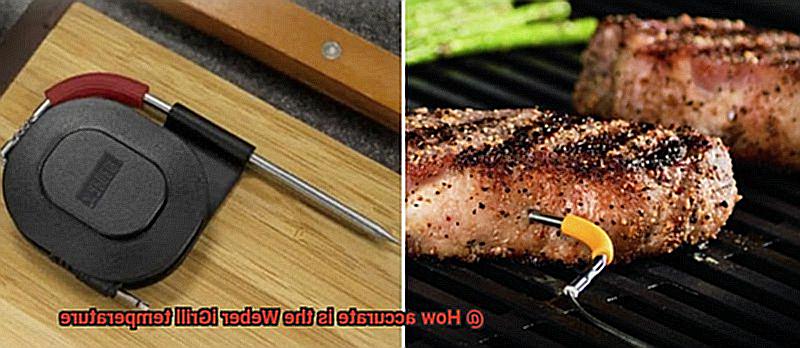
Calibrating Your Weber iGrill for Optimal Results
Attention all grill masters. Are you ready to take your grilling game to the next level? Look no further than calibrating your Weber iGrill for optimal results.
Calibration is crucial in achieving accurate temperature readings and perfectly cooked food. The Weber iGrill uses a temperature probe to measure the internal temperature of your food, and if it’s not calibrated correctly, it can result in undercooked or overcooked meat.
But fear not, calibrating your Weber iGrill is a simple process that can be done in just a few easy steps. First, grab a cup of ice and fill it up with water until it reaches the top. Next, insert the temperature probe into the ice water, ensuring it’s fully submerged but not touching the sides or bottom of the cup. Wait for about three minutes until the temperature stabilizes and reads 32 degrees Fahrenheit (0 degrees Celsius).
If your reading isn’t at 32 degrees Fahrenheit (0 degrees Celsius), don’t worry. You can quickly adjust the calibration by using a small screwdriver to turn the calibration dial on the back of your iGrill until it reads 32 degrees Fahrenheit (0 degrees Celsius).
But don’t stop there – it’s time to test your newly calibrated Weber iGrill. Fill a pot with water and bring it to a boil. Once boiling, place the temperature probe into the water and wait for about three minutes until the temperature stabilizes and reads 212 degrees Fahrenheit (100 degrees Celsius). If your reading is off by more than a degree or two, repeat the calibration process until it’s accurate.
By taking a few minutes to calibrate your Weber iGrill, you ensure that it’s providing accurate temperature readings, which is crucial for achieving perfect grilling results every time. Say goodbye to overcooked or undercooked meat and hello to perfectly cooked steaks, burgers, and more.
Other Considerations for Grilling Perfection
When it comes to grilling, achieving perfection is not just about temperature control and using the Weber iGrill thermometer. There are other crucial factors to consider that can make or break your cooking game.
Firstly, the quality and type of meat you choose will greatly impact your final product. Opt for high-quality cuts as they require less cooking time and can be cooked to a lower temperature than lower quality meats. It’s also important to note that different meats have different ideal cooking temperatures, so consulting a recipe or guide is essential.
The thickness of your meat is another consideration that affects cooking time. Thicker cuts will require longer cooking times, so it’s important to adjust your grill accordingly. Once your meat is cooked, allow it to rest before cutting into it. This redistributes the juices and results in a more tender and flavorful meal.
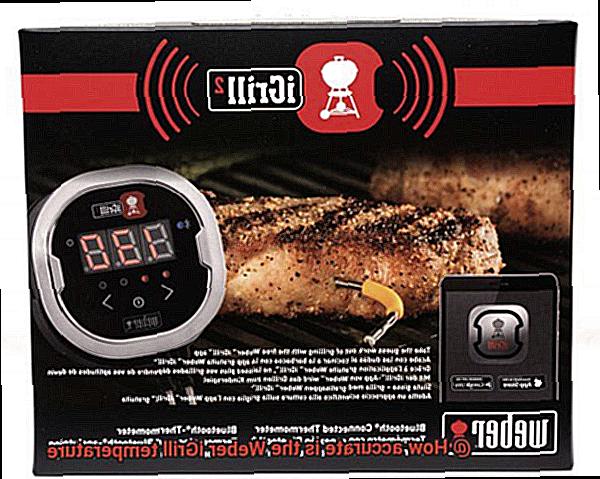
Weather conditions can also have an impact on your grilling success. Windy weather can cause fluctuations in temperature or even extinguish your flame. Hot and humid weather can also make it challenging to maintain a consistent temperature on your grill.
The Benefits of Using a Weber iGrill
That’s where the Weber iGrill comes in as an essential tool to elevate your grilling game. This versatile thermometer offers a plethora of benefits that help ensure your food is cooked to perfection every time.
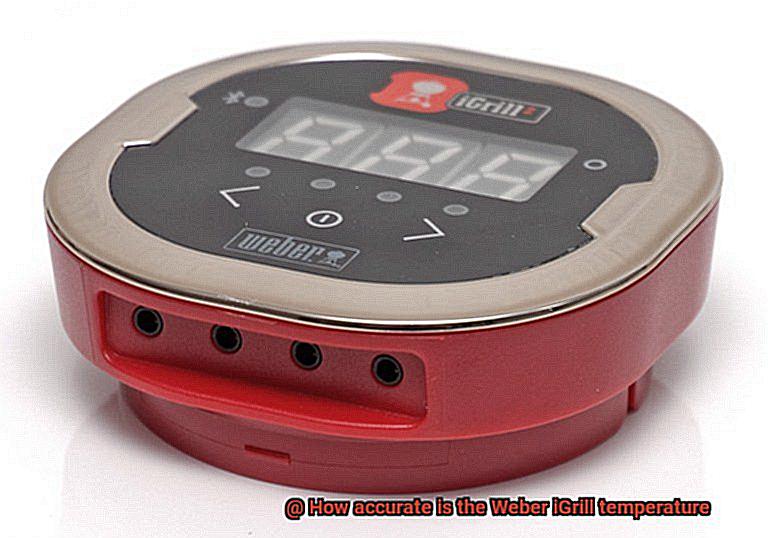
One of the most significant advantages of using the Weber iGrill is its accuracy in measuring temperature. The device uses advanced technology that provides accurate temperature readings within a range of +/-1°F, which is crucial for achieving perfect results when cooking meat. With this level of precision, even small deviations in temperature can be identified, preventing overcooking or undercooking.
In addition to accuracy, the Weber iGrill can monitor multiple temperatures at once, making it easier to cook different types of food simultaneously. With the ability to connect up to four probes, you can monitor various parts of the same piece of meat or different types of food on the grill. It’s particularly useful when cooking larger cuts of meat like brisket or pork shoulder, where different parts may cook at varying rates.
The Weber iGrill’s smartphone app is another feature that enhances its usability. You can monitor temperatures remotely and receive alerts when your food is cooked to your desired level of doneness. The app also includes recipes and cooking tips, making it an excellent resource for grilling enthusiasts who want to expand their culinary horizons.
Finally, the Weber iGrill is just plain fun to use. Its sleek design and high-tech features make it an attractive accessory for any grill master. With its many benefits, you’ll be able to create mouth-watering meals every time you fire up the grill.
bkMlPZo42Gs” >
Conclusion
In summary, the Weber iGrill temperature probe is an indispensable tool for any grill master who wants to achieve flawless cooking results. Thanks to its advanced technology and intuitive app interface, the iGrill provides precise temperature readings with a range of +/-1°F. However, it’s worth noting that various factors can influence the accuracy of the readings, such as probe placement, ambient temperature, and humidity levels.
To ensure optimal accuracy with your Weber iGrill thermometer, proper calibration, maintenance, and cleaning are essential. Regular calibration guarantees that your thermometer measures temperatures within its intended range. Correct maintenance and cleaning keep your probes and device free from debris that could impact their accuracy.
The advantages of using a Weber iGrill are numerous. It provides accurate temperature control, can monitor multiple temperatures simultaneously, and comes with a smartphone app that delivers real-time updates on your food’s progress. The app also includes recipes and cooking tips to help you expand your culinary repertoire.
In conclusion, if you’re seeking a dependable thermometer that will assist you in achieving perfectly cooked meat every time you grill or smoke, the Weber iGrill is an excellent choice.

